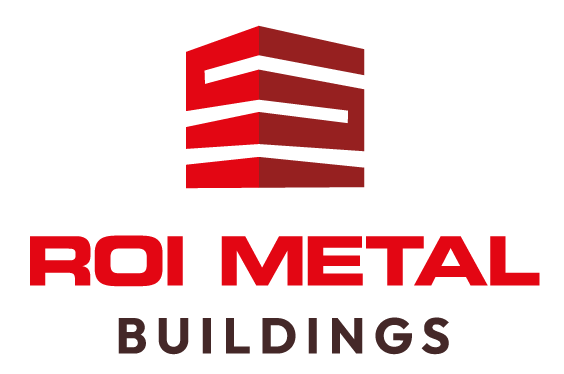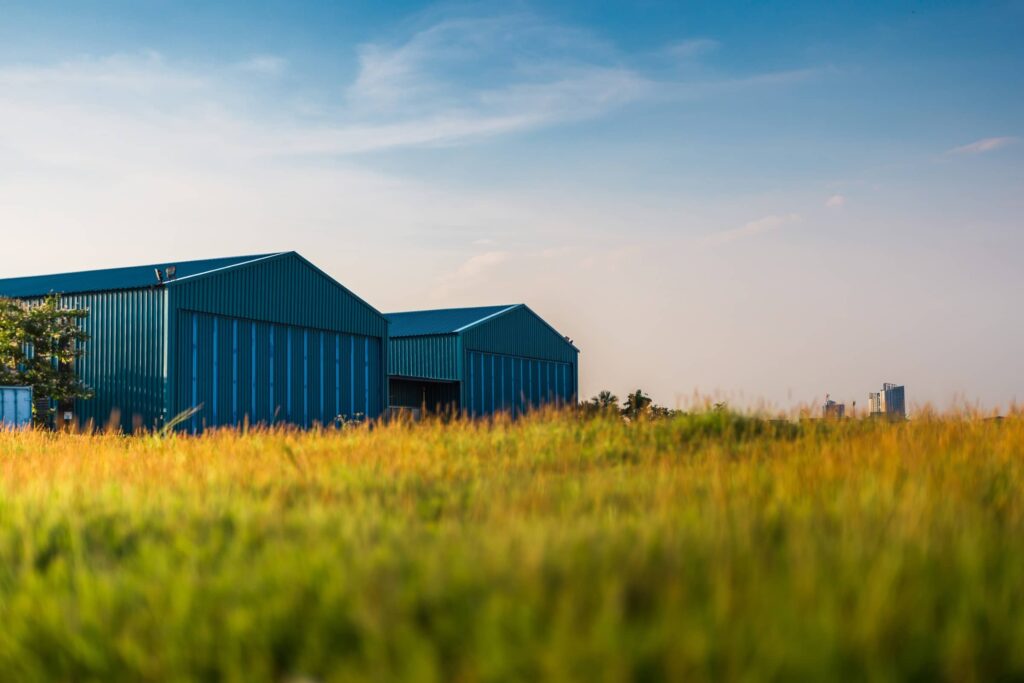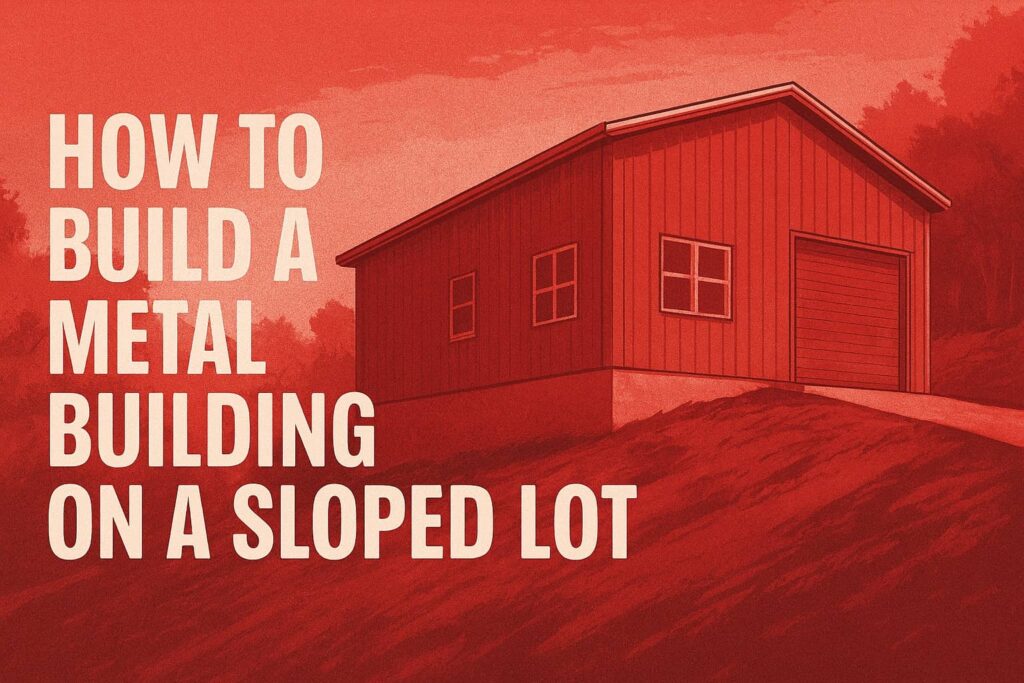Table of Contents
The Role of Metal Buildings in Modern Farming
Metal buildings have altered agricultural infrastructure by offering farmers durable, cost-effective structures that withstand extreme environmental conditions. These advanced facilities provide modular designs, technological adaptability, and significant economic advantages through reduced construction and maintenance expenses. Steel structures facilitate the seamless integration of precision farming technologies, optimize spatial management, and improve operational efficiency. Exploring the full potential of metal buildings reveals unprecedented opportunities for agricultural innovation.
- Metal buildings provide robust, adaptable infrastructure that supports advanced agricultural technologies and operational efficiency.
- Innovative steel structures offer significant cost savings through durable construction, minimal maintenance, and rapid deployment.
- Customizable modular designs enable farmers to create specialized spaces for diverse agricultural operations and future expansion.
- Advanced metal buildings enhance weather resistance, protecting valuable livestock, equipment, and agricultural assets from environmental challenges.
- Technology-ready frameworks facilitate the seamless integration of precision farming tools, IoT sensors, and automated management systems.

The Evolution of Agricultural Infrastructure
As agricultural practices have become increasingly sophisticated, infrastructure requirements have dramatically changed. Traditional wooden structures are being systematically replaced by advanced metal buildings that offer superior durability, cost-effectiveness, and technological adaptability. Farmers now prioritize infrastructure that can withstand extreme weather conditions, provide ideal environmental control, and support emerging agricultural technologies. Metal buildings represent a strategic investment, enabling rapid construction, minimal maintenance, and flexible configurations that align with evolving industry demands. These engineered structures support everything from precision livestock management to advanced crop processing, signaling a fundamental change in agricultural architectural approaches.
Economic Benefits for Modern Farmers
When evaluating agricultural infrastructure investments, metal buildings emerge as a pivotal economic strategy for modern farmers seeking cost-efficient solutions. These structures offer substantial financial advantages through reduced construction and maintenance expenses, with initial capital investments offset by long-term durability and performance. Steel’s fundamental resilience minimizes repair costs, while prefabricated designs accelerate deployment timelines and reduce labor expenditures. Farmers benefit from adaptable configurations that maximize operational efficiency, enabling scaled production without significant incremental infrastructure spending. By integrating technological innovations and sustainable design principles, metal buildings represent a strategic economic approach to agricultural infrastructure development.
Versatile Design Solutions for Agricultural Needs
The economic considerations of agricultural infrastructure naturally propel farmers toward design solutions that optimize both functionality and financial efficiency. Metal buildings offer unprecedented versatility through modular configurations that adapt seamlessly to diverse agricultural requirements. Customizable clear-span designs facilitate precise spatial management, allowing farmers to configure structures for equipment storage, livestock housing, processing facilities, and specialized agricultural operations. Advanced engineering permits rapid deployment, minimal site preparation, and integrated technological features such as automated climate control, renewable energy infrastructure, and scalable expansion capabilities. These design solutions represent strategic investments in agricultural productivity.
Enhanced Durability and Weather Resistance
Modern agricultural metal structures represent critical infrastructure engineered to withstand extreme environmental challenges while delivering superior performance across diverse climatic conditions. Steel buildings provide unparalleled resilience against wind, snow, rain, and temperature fluctuations, minimizing structural degradation and maintaining operational integrity. Their corrosion-resistant materials and robust design specifications allow farmers to deploy long-lasting facilities that protect valuable assets, livestock, and equipment. By utilizing advanced metallurgical technologies and precision engineering, these structures offer a cost-effective solution that reduces maintenance expenses and extends functional lifespan, ultimately enhancing agricultural productivity and operational reliability.
Energy Efficiency and Sustainability
Because sustainable agricultural practices increasingly demand energy-efficient infrastructure, metal buildings have become a pivotal solution for reducing operational carbon footprints and minimizing long-term energy expenditures. Advanced insulation technologies and reflective steel surfaces permit precise temperature regulation, greatly decreasing heating and cooling costs. Solar panel integration and fundamental material recyclability further improve environmental credentials. Farmers benefit from reduced utility expenses while contributing to ecological sustainability. Thermal efficiency and lightweight structural design allow metal buildings to optimize energy consumption, representing a strategic investment in economic performance and environmental responsibility for modern agricultural operations.
Specialized Applications in Farming
- Vertical farming systems with precise environmental controls
- Hydroponic and aquaponic research facilities
- Controlled cultivation environments for high-value crops
Engineered with modular design and adaptable configurations, metal buildings provide scalable solutions for emerging agricultural technologies. Their robust construction, coupled with integrated climate management systems, allows farmers to optimize production, reduce environmental dependencies, and maximize yield potential across diverse agricultural sectors. This groundbreaking approach represents a strategic investment in future farming methodologies.
Technology Integration and Smart Farming
As agricultural technology rapidly evolves, metal buildings are emerging as critical infrastructure for smart farming integration. These structures provide adaptable frameworks for implementing sensor networks, IoT devices, and advanced monitoring systems. Precision agriculture technologies like environmental control systems, automated feeding mechanisms, and climate tracking equipment can be seamlessly installed within metal building configurations. Modern metal agricultural facilities support data collection infrastructure, enabling farmers to optimize resource management, track livestock health, and improve operational efficiency through sophisticated technological implementations.
Future Trends in Agricultural Construction
- Modular prefabricated structures enabling rapid deployment and scalable configurations
- Advanced thermal and energy-efficient systems reducing operational costs
- Smart integration of IoT sensors for real-time environmental monitoring and climate control
These trends represent a pragmatic shift towards more responsive, cost-effective agricultural facilities that maximize operational efficiency while minimizing long-term infrastructure investments. Emerging metal building technologies will provide farmers unprecedented flexibility in designing purpose-built agricultural environments tailored to precise production requirements.
Conclusion
Metal buildings represent a pivotal technological advancement in agricultural infrastructure, delivering quantifiable economic and operational benefits. Their adaptive design, superior durability, and scalable configurations empower farmers to optimize resource allocation, mitigate environmental risks, and improve overall productivity. As agricultural technology continues to evolve, metal structures will remain a critical strategic investment for progressive farming operations seeking efficiency and resilience.
Request A Quote Today!




